



The Pradhan Mantri Ayushman Bharat Health Infrastructure Mission (PM-ABHIM), with a ₹64,180 crore outlay, builds a resilient health system by strengthening primary to tertiary care. It sets up labs, critical care blocks, and disease surveillance while promoting a ‘One Health’ approach for preventive, diagnostic healthcare.
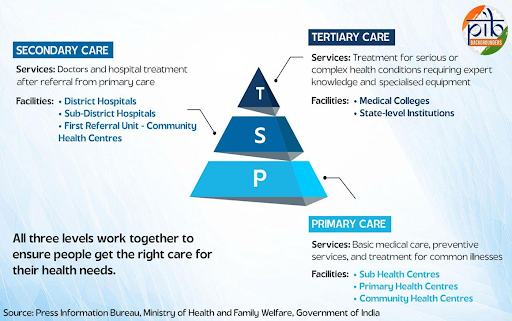
Copyright infringement not intended
Picture Courtesy: PIB
The COVID-19 pandemic highlighted the need for a stronger health system in India, leading to the creation of PM-ABHIM to enhance the nation's health, research, and surveillance infrastructure.
The Pradhan Mantri Ayushman Bharat Health Infrastructure Mission (PM-ABHIM) was launched in October 2021 with a budget of ₹64,180 crore for 2021-26, to create a strong, accessible, and self-sufficient healthcare system across India.
It was created in response to the weaknesses exposed by the COVID-19 pandemic and builds upon the National Health Policy 2017, aligning with other Ayushman Bharat programs like Jan Aarogya Yojana.
Its objectives include:
|
Pandemic Agreement of the World Health Organisation
|
Ayushman Arogya Mandirs (AAMs)
The mission aims to convert 17,788 existing Sub-Health Centres into Ayushman Arogya Mandirs, and establish 11,024 Urban AAMs, to offer comprehensive primary healthcare, including free medical consultations, tests, and medicines. (Source: PIB)
Block Public Health Units (BPHUs)
Aims to establish 3,382 Block Public Health Units (BPHUs) to enhance health administration, service delivery, and emergency management at the block level.
Integrated District Public Health Laboratories (IPHLs)
Establishes 730 Integrated Public Health Laboratories in each district to improve diagnostic and surveillance capabilities for infectious and non-infectious diseases, providing accurate data for quick outbreak responses. (Source: PIB)
Critical Care Hospital Blocks (CCBs)
Establish 602 critical care hospital blocks (50-100 beds each) in districts with over 5 lakh population to improve critical and infectious disease treatment. (Source: PIB)
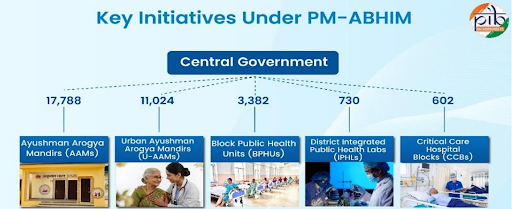
Low Fund Utilization
Reports indicate low fund utilization by states. For example, PM-ABHIM utilized only 29% of its budget in 2022-23, indicating administrative hurdles. (Source: The Hindu)
Construction Delays and Space Issues
Construction of new Critical Care Hospital Blocks and Integrated Public Health Labs is delayed by rigid procedures, overlapping funding, and land acquisition issues.
Human Resource Shortages
Healthcare system faces a shortage of medical and paramedical staff. High vacancy rates, like more than 40% of faculty positions across various AIIMS remain vacant, hinder the effectiveness of new facilities. (Source: NDTV)
Sustainability and Recurring Costs
Despite central government capital support, states are concerned about the long-term sustainability and financial burden of new infrastructure and human resources due to maintenance costs.
Integration Challenge
States have faced challenges in establishing Integrated District Public Health Laboratories (IPHLs) due to difficulties in combining public health labs from different vertical programs.
Urban-Rural Disparity
Unequal distribution and operation of healthcare facilities create disparities in access and quality between urban and rural areas.
Inter-State Variations
States differ in project implementation speed and fund utilization, with some failing to use central funds fully.
Optimize Funding and Project Implementation
Both the Union and State governments need to streamline funding processes and accelerate administrative approvals.
Digital platforms like PRAGATI can be utilized for regular monitoring and to address bottlenecks efficiently.
Strengthen Human Resources
Increase medical and nursing admissions, incentivize rural service, and provide continuous training, especially in critical care and diagnostics, to address healthcare professional shortages.
Leverage Digital Health Technology
Integrating PM-ABHIM with the Ayushman Bharat Digital Mission (ABDM) to establish a unified digital health ecosystem, enabling seamless data exchange, expanding telemedicine, and enhancing real-time health monitoring.
Promote Public-Private Partnerships (PPPs)
Private sector investment can enhance public healthcare by offering diagnostic services, specialized treatment, and advanced equipment, thereby reducing financial strain on the public sector.
Enhance Community Involvement
Successful health programs require community and local government (Panchayati Raj Institutions) involvement from planning to monitoring.
Implement 'One Health' Approach
Preventing zoonotic diseases and environmental health threats requires active collaboration between human health, animal health, and environmental agencies.
Establish Robust Regulatory and Quality Frameworks
Strong regulations and a focus on quality are vital for new healthcare infrastructure to provide ethical, patient-focused, and high-quality care.
PM-ABHIM offers an opportunity to transform the healthcare system by addressing implementation challenges and adopting a technology-driven approach, creating a strong and equitable public health system for the future.
Source: PIB
|
PRACTICE QUESTION Q. Discuss the role of the Pradhan Mantri Ayushman Bharat Health Infrastructure Mission (PM-ABHIM) in bridging the urban-rural healthcare divide. (150 words) |
AB-PMJAY is the world's largest government-funded health assurance scheme, providing a health cover of ₹5 lakh per family per year for secondary and tertiary hospitalization. It is designed to benefit poor and vulnerable families identified based on the Socio-Economic Caste Census (SECC) database.
CGHS is a government health scheme that provides comprehensive medical care to Central Government employees, pensioners, and their dependent family members.
The ABHA card is a digital health ID that securely stores and links a person's medical records. It is part of the broader Ayushman Bharat Digital Mission (ABDM) to create an integrated digital healthcare system.
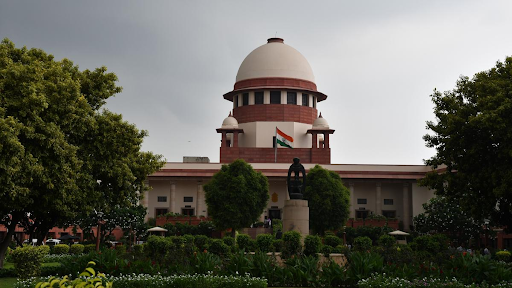
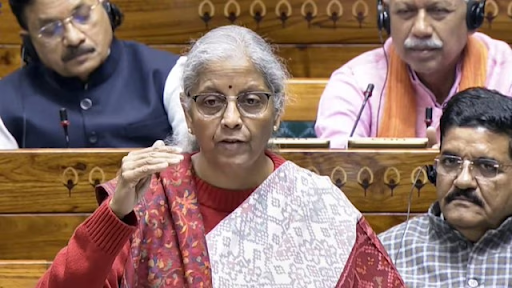
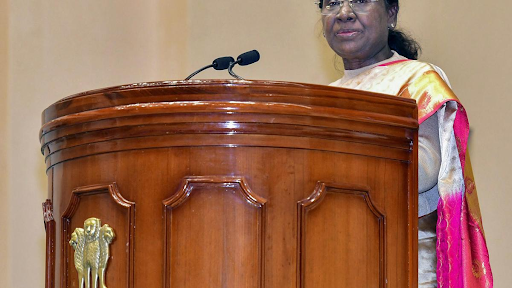
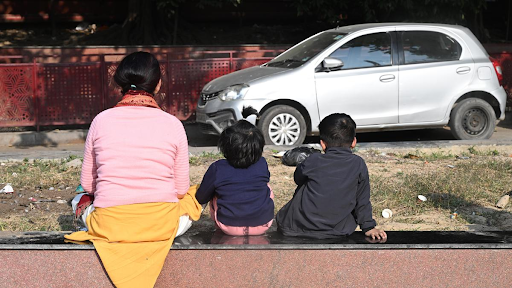

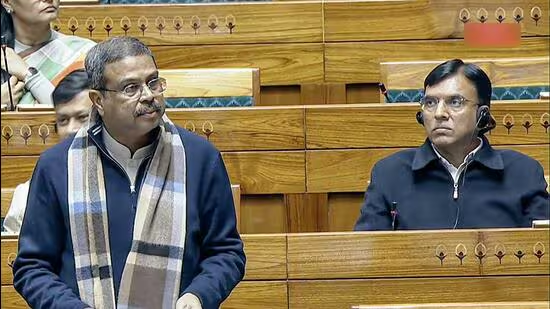

© 2025 iasgyan. All right reserved